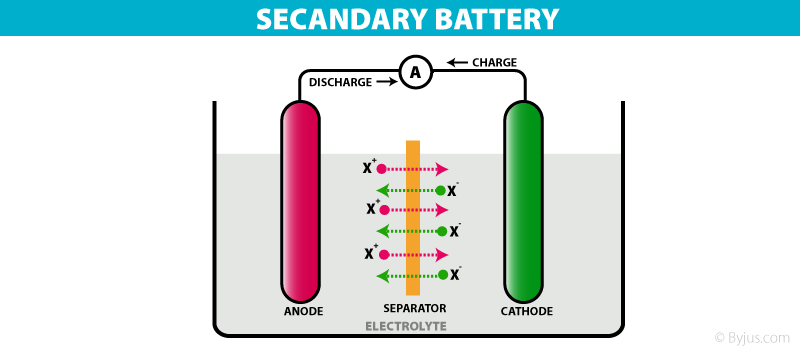➤क्षार धातुएं : सभी क्षार धातुएं विद्युत रासायनिक श्रेणी में निन्मतं स्थान पर स्थित है क्योकिं इनके मान इलेक्ट्रोड विभव के मान उच्च होते है , फलस्वरूप इनकी इलेक्ट्रान दान करने धनायन बनाने की प्रवृति भी अधिक होती है जिसके फलस्वरूप ये प्रबल अपचायक होती है।
➤विद्युत अपघटन : वह प्रक्रिया जिसमे विद्युत अपघट्ये पदार्थ अपनी गलित अवस्था या जलिये विलयन में विद्युत धारा प्रवाहित करने पर अपघटित हो जाता है। विद्युत अपघटन कहलाती है।
उदहारण : जलिये NaCL विलयन का विद्युत अपघटन निन्म प्रकार किया जाता है -
2NaCL ⇋ 2Na+ + 2CL-
➤चालकत्व की परिभाषा : किसी वैद्युत अपघट्ये के विलयन या उसकी गलित अवस्था में विद्युत धारा प्रवाहित करने की क्षमता उसका वैद्युत अपघटनी चालकत्व कहलाता है
वैद्युत अपघट्यो के विलयनों का चालकत्व C उनके प्रतिरोध R का व्युत्क्रम होता है।
C = 1/R
➤विद्युत अपघटनी सेल : वह सेल जिसमे विद्युत ऊर्जा रासायनिक ऊर्जा में परिवर्तित होती हो , विद्युत अपघटनी सेल कहलाती है। इसमें एनोड धन ध्रुव व कैथोड ऋण ध्रुव होता है। इसमें बाह्य स्रोत से बैटरी या विद्युत ऊर्जा या अन्य स्रोतों से ऊर्जा प्रदान की जाती है। इसमें एक ही पात्र में एक ही वैद्युत अपघट्ये के विलयनों में दोनों डूबे रहते है तथा इसमें लवण सेतु या सरंध्र पात्र द्वारा प्रयुक्त नहीं होता है।
उदहारण : ZnCL₂⇋Zn + CL₂
English Translation :
➤Alkali metals: All alkali metals are located at the lowest position in the electrochemical category because their values are higher than the electrode potential, as a result of which they have a higher tendency to make electron donating cations and as a result it is stronger.
➤Electrical decomposition: The process in which an electrolyte is decomposed by an electric current flowing through its dissolved state or in a lit solution. This is called electrical decomposition.
Example: Electrical decomposition of NaCl solution is done as follows:
2NaCL ⇋ 2Na + + 2CL-
➤Definition of conductivity: The ability of an electrolyte to dissolve or conduct an electric current in its dissolved state is called its electrolyte conductivity.
Conductivity C of the solutions of electrolytes is the inverse of their resistance R.
C = 1 / R
➤Electrolytic cell: The cell in which electrical energy is converted into chemical energy is called electrolytic cell. It consists of anode plus pole and cathode minus pole. It provides battery or electrical energy from an external source or from other sources. In this, both are immersed in the solutions of the same electrolyte in the same vessel and the salt is not used by the bridge or porous vessel.
Example: ZnCL₂⇋Zn + CL₂



















